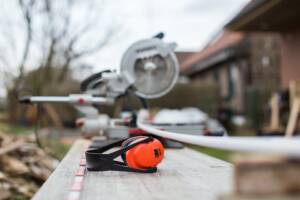Sound Advice: Hearing Protection 101
Having capable hearing and healthy ears is an often-overlooked aspect of good health. Learn how to protect your hearing and keep your ears healthy for years to come.
The Importance of Hearing Protection
You need ear protection in any situation where the noise levels are above 85 decibels. Any noise level over 85 decibels can cause permanent hearing damage and more complications later in life. Reasons why you need hearing protection, include:
- The ear’s structure is delicate and vulnerable to damage
- Hearing damage is irreversible
- Hearing protection can protect against workplace hearing loss
- Tinnitus, which is a common hearing problem, affects the quality of your life
- Good hearing is essential for your safety on the road, at home, and at work
- Some levels of noise can be painful (above 120 decibels)
- Loud noise can affect your overall health/wellbeing and cause high blood pressure, rapid heart rate, stomach pain, trouble sleeping, and problems with baby development in the womb
What’s too loud?
Decibels (dB) are the unit of measurement for sound—normal conversation rates are at around 60 decibels. When you expose your ears to consistent noise above 70 decibels, there’s a risk of hearing damage. Noises above 120 dB can cause immediate damage to your ears. Loud noises such as sirens and firecrackers are in this category. With ear protection such as foam plugs, you can protect your ears against damage in noisy surroundings.
Who Needs Hearing Protection?
Protecting yourself from loud noises while at work or at a concert can save you from hearing loss. While it’s unreasonable to use hearing protection constantly, there are some situations where you should always wear earplugs or some sort of other protection. These situations include:
- In jobs where you use power tools that emit sound over 85 decibels
- When working in noisy conditions such as factories, construction sites, airports, and shooting ranges
- During events where you’ll enjoy fireworks
- Events such as motor racing and music concerts
- When playing in a band or symphony
- Using lawn or snow removal equipment
- Near gunfire, whether hunting or on a gun range
Types of Hearing Protection
Earplugs
Earplugs are moldable or pre-molded foam plugs that you insert into the ear canal to protect your ears. You can choose from reusable or disposable earplugs or get custom-molded earplugs from your audiologist.
Noise-canceling headphones
These are advanced headphones that leverage sound with miniature microphones. The microphones listen to external noise and emit the exact opposite frequency to “cancel out” all these sounds. They are commonly used in airplanes to help passengers sleep.
Ear Muffs
Ear muffs feature comfortable soft ear cushions and sound-attenuating material inside. They have a headband to hold everything together, making them easy to fit.
Choosing Hearing Protection
When choosing which type of hearing protection you’d like to go with, consider the following:
- Style/aesthetics
- Pricing
- Quality of material for efficiency, durability, and comfort
- Climatic conditions in your area
- Your lifestyle
- Noise reduction rating
Start Protecting Your Hearing Today!
The first step in protecting your hearing is to consult an audiologist. These specialists help to prevent hearing loss as well as to diagnose and treat hearing problems.
FAQs
How often should you get your hearing checked?
Until you turn 50, you should get a hearing test at least once every 10 years. After you turn 50, you should get your hearing checked once every other year to begin with.
What is the sound limit that our ears can tolerate?
The human ear can tolerate a maximum of 85 decibels.
Do your eardrums heal themselves?
Yes, a ruptured/perforated eardrum may heal itself within weeks or months, although severe perforations may require surgery.
Is hearing loss reversible?
Depending upon the type of hearing loss you have, the hearing loss may not be reversible. This occurs when the auditory nerve or structures of the inner ear are damaged. This type of hearing loss is referred to as sensorineural hearing loss, and it can be the result of noise exposure, genetics, aging, or certain medications and/or health conditions. Hearing aids can often improve overall hearing if your ear is damaged.
What happens when you don’t wear ear protection?
If you choose not to wear ear protection, your risk of being inflicted with hearing damage and loss goes up drastically.
At Associated Hearing Professionals, we consider hearing health an integral part of your overall health. Contact us at 314-725-2686 or fill out a form today to learn more about hearing protection.

